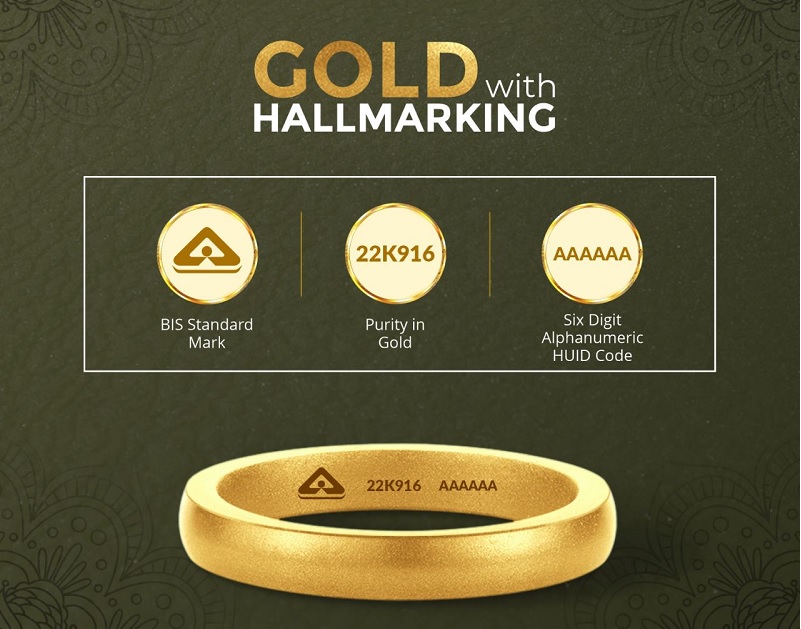The penalty may be five times the cost of the jewellery and the imprisonment of up to one year.
In November 2019, Consumer Affairs Minister, Ramvilas Paswan announced that no jeweler will be allowed to sell gold ornaments without hallmarks from the Bureau of Indian Standards (BIS) from 15th January 2021.
Now an extension of over four months has been made. The deadline for mandatory hallmarking of gold jewelry and artefacts till June 1, 2021. The Minister said that hallmarking will benefit the poor in villages and small towns, who are not able to identify the purity of gold they are buying.
The study observed that no hallmarked gold is sold in smaller cities and rural areas. Consumers are unaware of the hallmarking system. But now the government has ensured to create awareness across the country so that they can demand the hallmarked gold jewellery.
As Managing Director, Somasundaram PR of World Gold Council believes that, the practice will bring trust back to the gold industry and lead to more jobs in purity verification, which ultimately support the gold monetization scheme.
What is Hallmarking?
“Hallmarking adds glitter to gold”. The process of certifying the purity of gold is called hallmarking. The principle objectives of the hallmarking scheme are to protect the public against adulteration and to obligate manufacturers to maintain legal standards of fineness/purity.
Around 40% of gold jewellery is being hallmarked currently because of the hallmarking scheme running by BIS since April 2000 but now it will become mandatory from 1st June 2021 under which jewellers who want to sell gold jewellery have to take BIS registration and they will be allowed to sell only 14, 18 and 22-carat gold jewellery.
Policymakers and experts said that there could be around 120,000 – 150,000 jewellers in the country and among them, only 28,000 are registered with BIS to sell hallmarked gold jewellery. The government official also quoted that the actual weight of average hallmarked jewellery is about 10 gm.
There are four components that one should look at on the hallmarked gold jewellery to ensure the purity of gold:
- BIS Mark
- Purity in Karat and fitness
- Assaying and hallmarking centre’s identification mark/number
- Jeweller’s Identification mark/number
Indian Standards for Hallmarked Metals
IS 1417 “Gold and gold Alloys”
IS 2112 “Silver and silver Alloys”
The hallmarking over the metals shall be marked by laser marking.
Hallmarking Fee
- Hallmarking fee for gold articles payable to recognized as saying and hallmarking centres by jewellers shall be Rs 35/- article.
- Hallmarking fee for silver articles payable to recognized as saying and hallmarking centres by jewellers shall be Rs 25/- article.
Role of BIS in the Mandatory Hallmarking Scheme

BIS (Bureau of Indian Standards) helps the jeweller to get registered themselves and further BIS certified jewellers can get their jewellery hallmarked from any BIS-recognized assaying and hallmarking centres.
Following are the two procedures of BIS registration for jewellers and assaying centres.
1-Application for registration: A jeweller can apply for a grant of certificate of registration to sell precious metal articles. The registered jeweller shall be responsible for the purity and fitness of the hallmarked metal articles.
2-Application for recognition: Any assaying centre set up by a relevant Indian Standard may apply for a grant of recognition to operate as a saying and hallmarking centre. The assaying and hallmarking centre shall be responsible for the determination of the purity and fitness of precious metal articles.





Phebe Matey
Thanks for helping out, superb information.